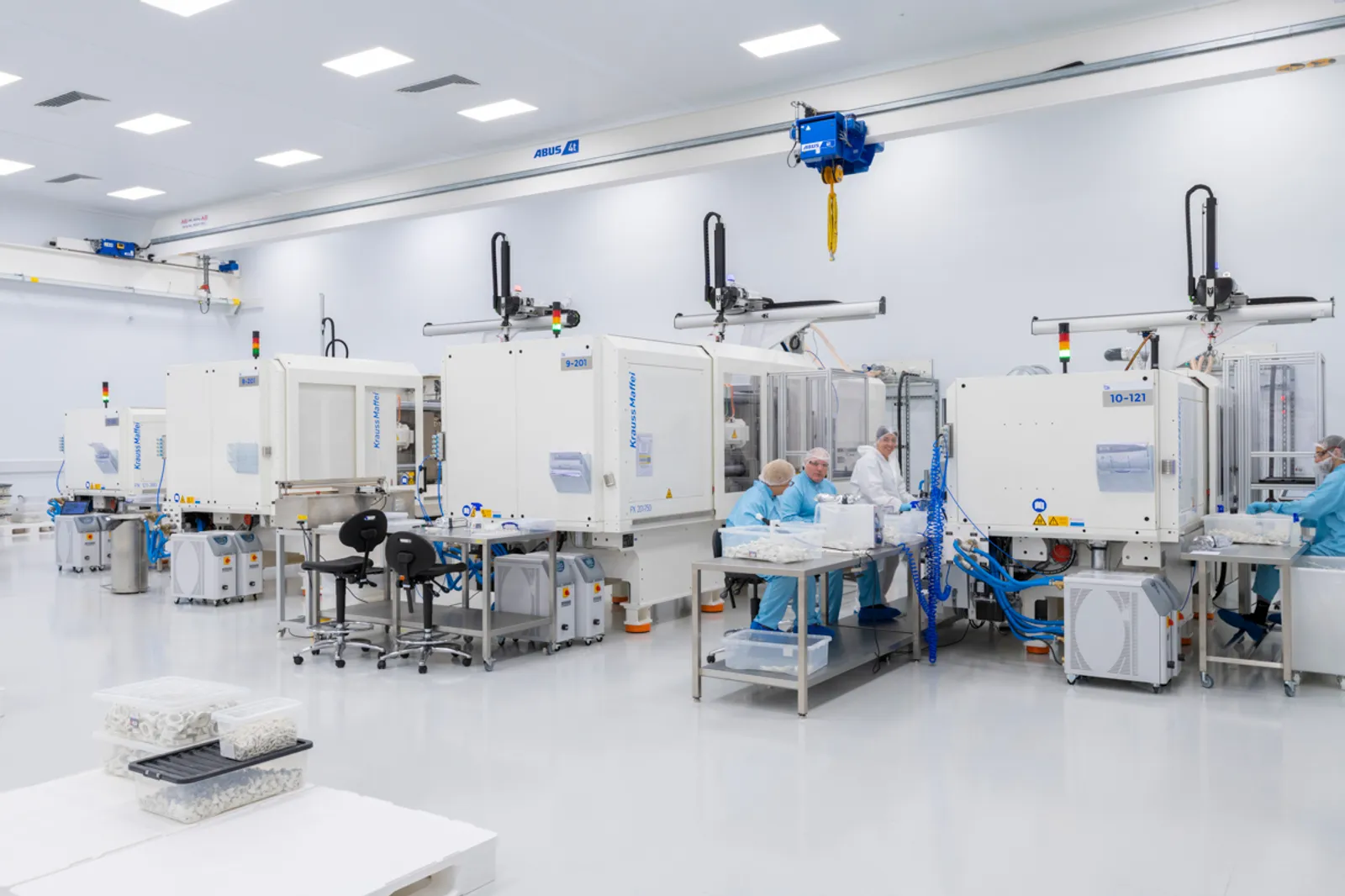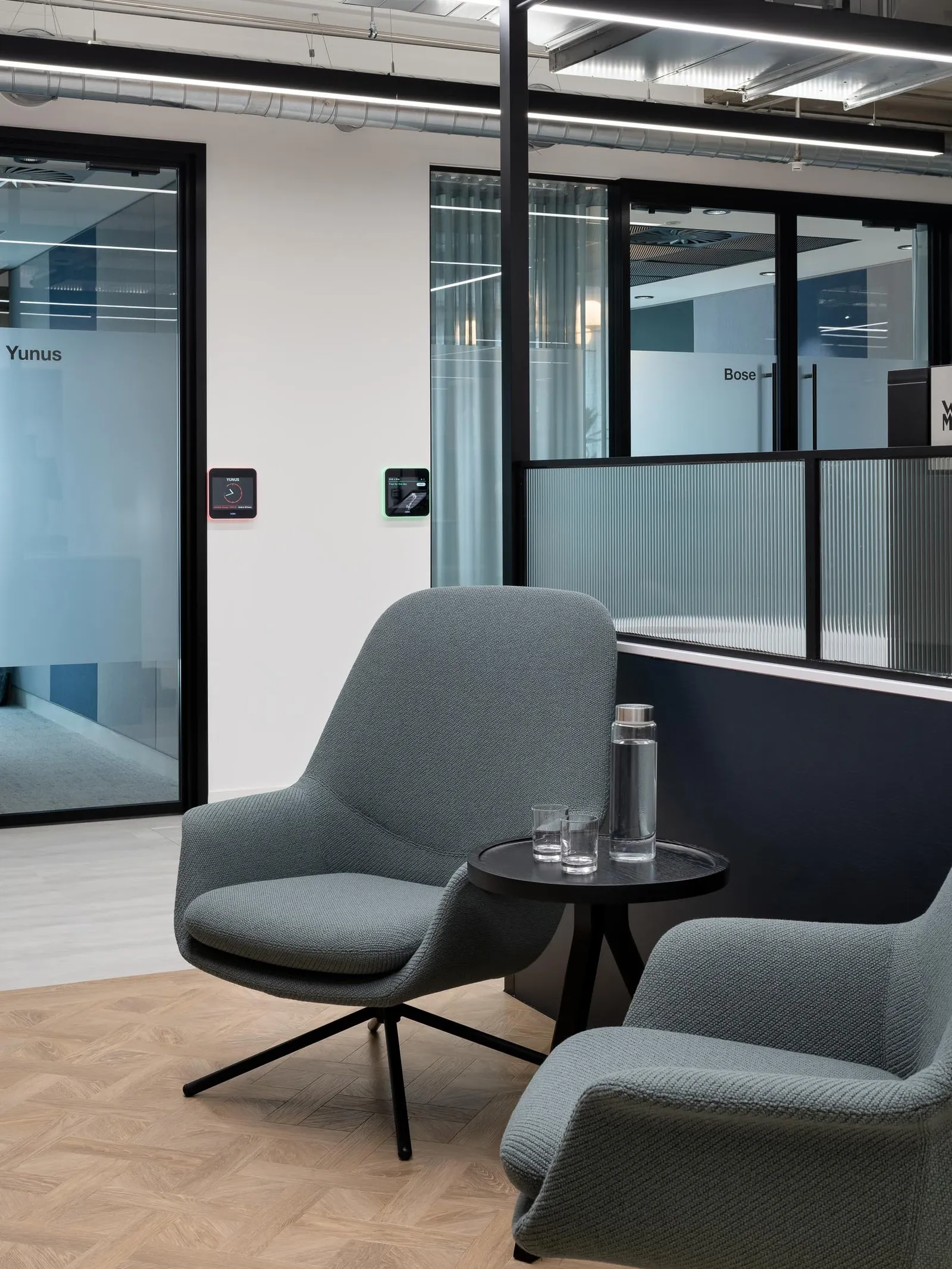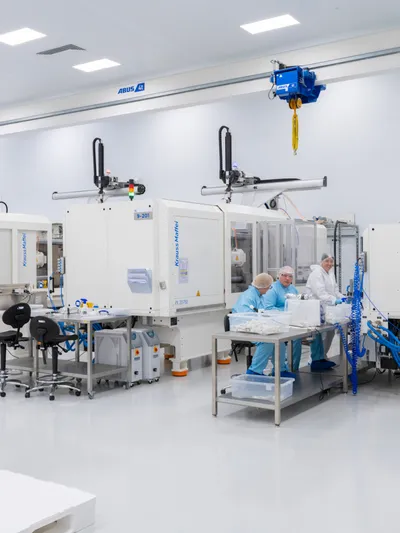Good Manufacturing Practice (GMP) laboratories are critical environments. Typical industries that require work to be conducted in such environments include regulated industries such as pharmaceuticals, biotechnology, cosmetics, and food production. These labs ensure that products are consistently produced and controlled according to strict quality standards set by regulatory bodies.
GMP labs are designed to maintain product integrity, prevent contamination, and ensure compliance with national and international regulations. Because of this, they demand complex, stable environments, and the importance of these environments means that their design must be both rigorous and highly specialised.
Discover precisely what GMP labs are and find answers to common questions about the necessary features and components that make up their design.
What is a GMP Lab?
A GMP laboratory is a facility where regulated products are manufactured and tested to ensure quality control and consistency. Such products are manufactured under strict guidelines that are defined by bodies including the Regulatory Agency (MHRA), the European Medicines Agency (EMA), or the U.S. Food and Drug Administration (FDA).
These labs play a vital role in ensuring the safety, quality, and efficacy of products that enter the market. Activities conducted in GMP Labs may include raw material testing, in-process control, final product testing, and environmental monitoring. Data generated in these labs supports product release decisions, so the work that is conducted must be reliable, traceable and precise.
Key Components of GMP Labs
1. Cleanrooms and Controlled Environments
GMP labs are likely to house cleanrooms - such areas are precision-controlled environments where any contaminants (i.e. dust, airborne microbes, and aerosol particles) are highly regulated. Cleanrooms are classified according to ISO standards (e.g., ISO 5 to ISO 8) or EU GMP Grades A to D.
Key features include:
HEPA-filtered air supply and return systems
Positive or negative air pressure differentials
Airlocks and interlocking doors to prevent contamination
Smooth, seamless wall and floor finishes for easy cleaning
The classification and level of control depend on the processes being performed and the risk to product integrity.
2. Segregated Functional Areas
The physical and procedural separation of different processes ensures that the labs minimise the risk of cross-contamination and adhere to compliance regulations. To help with this, different functions are kept separate, for example:
Material reception and sampling
Raw material testing
Microbiology or chemistry suites
Stability and retention sample storage
Waste management and decontamination areas
Flow control, for people, materials, and waste, is crucial to uphold GMP integrity.
3. Qualification and Validation Infrastructure
Good Manufacturing Process labs are required to demonstrate that their facilities, systems, and processes are fit for purpose. They can do this by achieving the following:
Installation Qualification (IQ)
Operational Qualification (OQ)
Performance Qualification (PQ)
This includes lab equipment (e.g., HPLC, GC, balance systems), software validation (per GAMP 5), and calibration schedules. All design elements must support traceability and compliance.
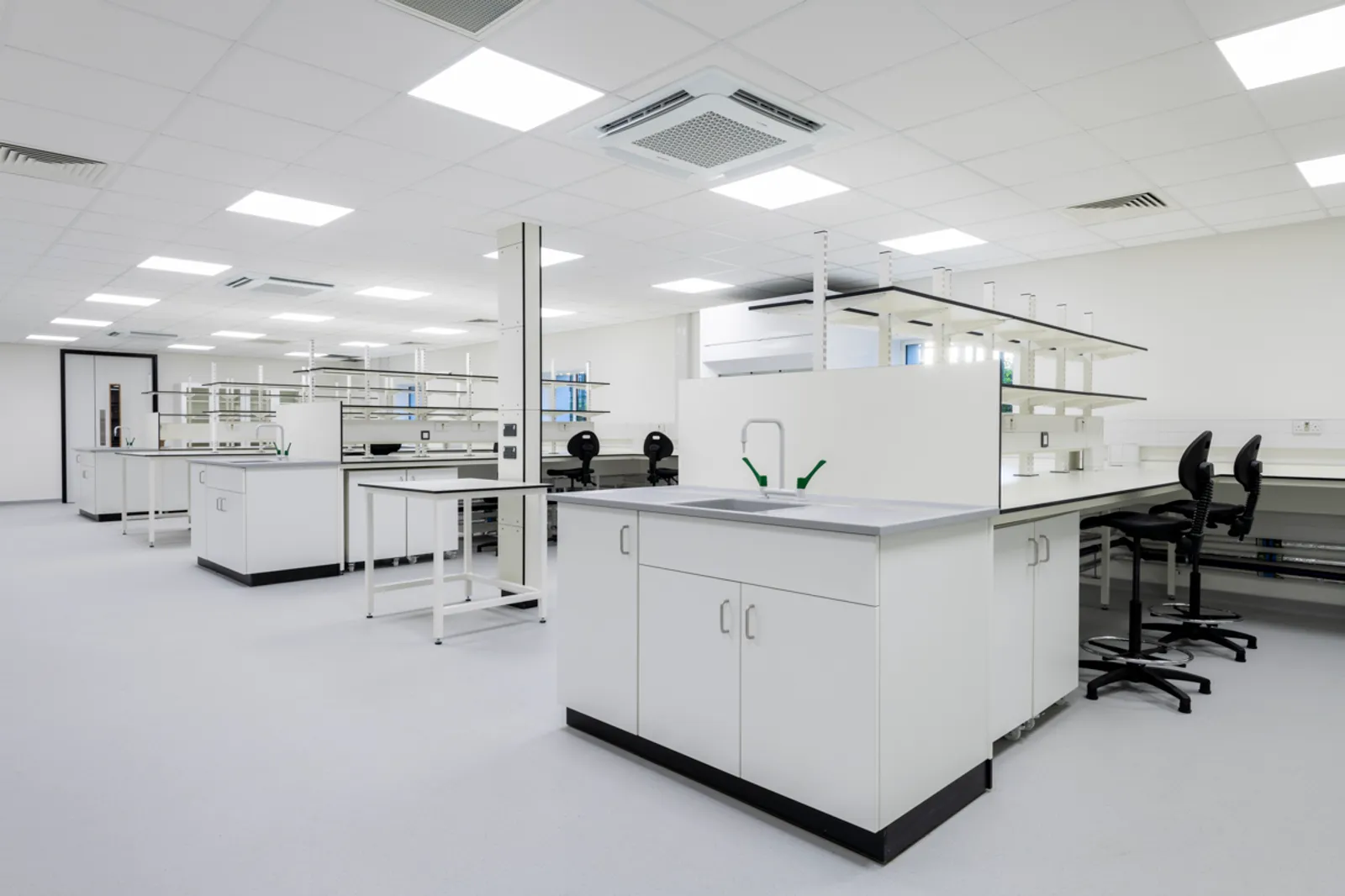
GMP Lab Design Considerations
Designing a GMP laboratory requires a comprehensive understanding of both technical requirements and regulatory expectations. Every aspect must align with GMP principles: "document what you do, do what you document."
Key design considerations include:
Flexibility and Scalability
While GMP facilities are highly regulated, it's still essential to build in flexibility for changing workflows, equipment upgrades, or future product lines. Modular wall systems, mobile benching, and reconfigurable MEP services (mechanical, electrical, plumbing) support scalable growth.
However, flexibility must always be carefully balanced with validation requirements and change control protocols.
Workflow Separation and Containment
Efficient layout planning is essential to maintain unidirectional flow, from "clean" to "dirty", of personnel, materials, and waste. Clearly defined and segregated pathways reduce cross-contamination risk.
Designers must consider:
Dedicated changing rooms and airlocks
Segregated corridors for waste removal
Controlled access to high-grade cleanrooms
These physical separations underpin a compliant and efficient GMP lab.
Environmental Monitoring and Control
Environmental control is not just for comfort; it's a regulatory requirement. Parameters such as temperature, humidity, airborne particulate levels, and microbial loads must be continuously monitored and recorded.
Design features of Good Manufacturing Process Laboratories may include:
Advanced HVAC systems with zoned control
Real-time environmental monitoring systems (EMS)
Redundant systems to ensure 24/7 stability
Alarm thresholds and response protocols must also be incorporated into the infrastructure.
Safety and Compliance
Safety in GMP labs is about both protecting staff and maintaining product quality. Designs must meet multiple layers of regulation, including:
COSHH (Control of Substances Hazardous to Health)
HSE guidance for laboratory safety
Annex 1 of the EU GMP for sterile manufacturing
Data integrity requirements (e.g. ALCOA+ principles)
Features like fire-rated construction, gas leak detection, and ergonomically placed safety stations are standard.
Data Integrity and Automation
Digitalisation plays an increasing role in GMP compliance. Lab Information Management Systems (LIMS), Building Management Systems (BMS), and electronic batch records (EBR) require robust infrastructure.
Designs must support:
Secure data capture and storage
CCTV and access control integration
Server rooms with appropriate cooling and redundancy
Lab environments must also be compatible with future automation, such as robotic sample handling or AI-driven analysis.
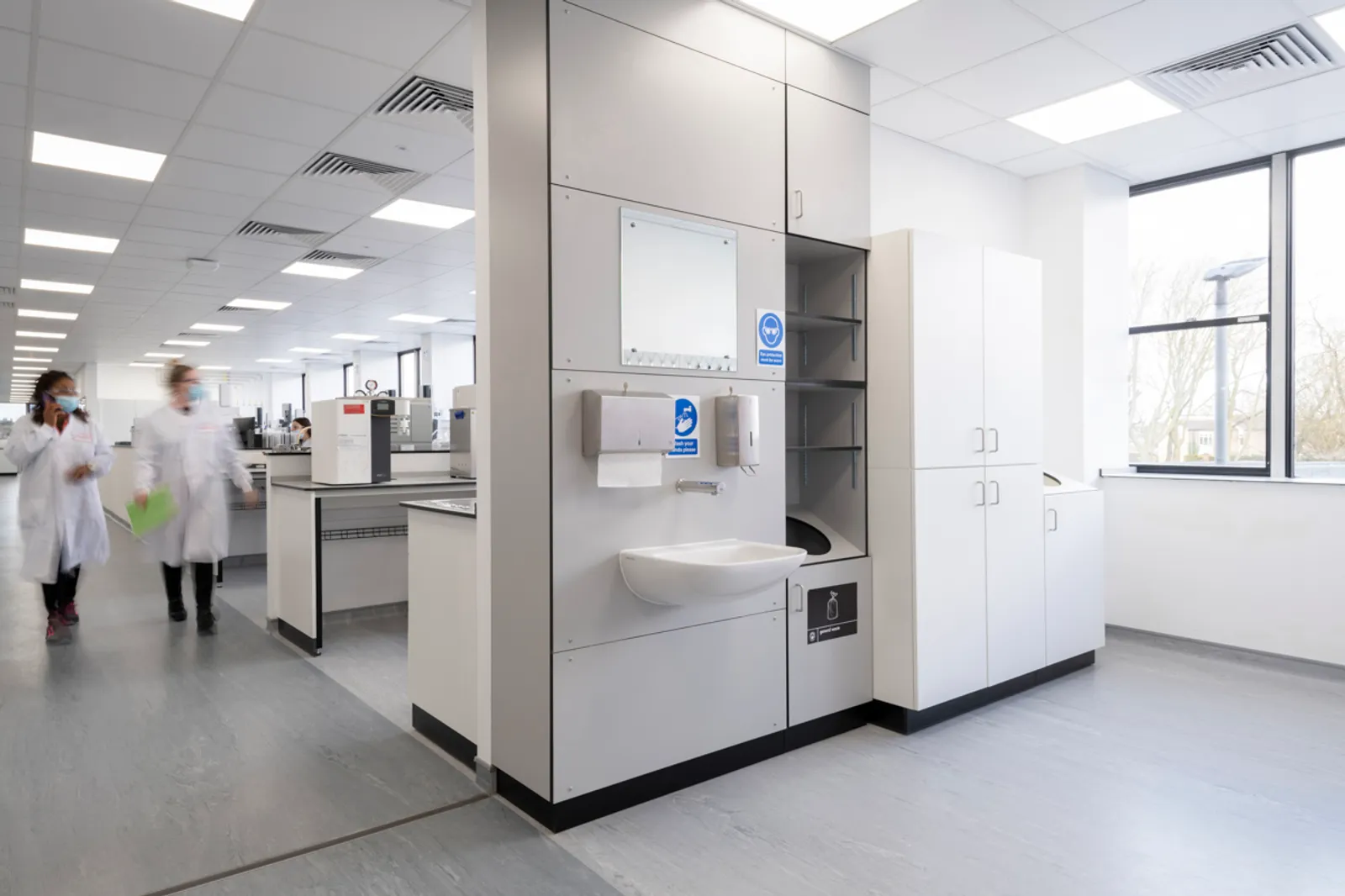
GMP Labs FAQs
What's the difference between a GMP Lab and an R&D Lab?
Compliance is a key factor in GMP lab design alongside repeatability and traceability. Research labs, on the other hand, focus on exploration and experimentation.
GMP labs require full documentation of every step, validated processes, and adherence to strict protocols.
Research labs are more flexible and changeable by nature, with less stringent validation and regulatory burden.
As such, GMP labs are typically more complex, with higher construction and operating costs.
What is the difference between ISO cleanroom classifications and EU GMP grades?
Both systems describe air cleanliness, but they serve different purposes:
ISO (14644-1) classifies cleanrooms by particle count per cubic metre (e.g., ISO 5 is cleaner than ISO 8).
EU GMP Grades (A–D) incorporate both particle count and microbiological limits. Grade A is the most sterile, typically used for aseptic operations.
Designers often refer to both systems, with conversion tables used during specification.
How long does it take to build a GMP lab?
Building a GMP lab involves more than just fit-out, it includes regulatory design input, commissioning, and validation. Timelines vary by size and complexity, but typical phases include:
Feasibility and user requirement specification (URS): 3–6 weeks
Concept and detailed design: 6–10 weeks
Regulatory consultation and planning: 4–8 weeks (if applicable)
Construction and commissioning: 12–26 weeks
Validation and regulatory audit readiness: 4–12 weeks
A simple GMP QC lab retrofit may be completed in 5–6 months, while a full new-build production lab can take 12–18 months.
Working with experienced partners like Area Laboratories ensures smooth project delivery, compliance from day one, and early mitigation of regulatory risks.
Design Your GMP Lab with Area Laboratories
GMP laboratories are among the most complex and regulated lab environments to design. Because of this, expert design skills and specific industry knowledge are crucial to ensuring the lab is built to ensure compliance.
Meticulous attention to flow and function, as well as the flexibility to accommodate future regulatory changes, should all be factored into the laboratory design.
At Area Laboratories, we bring the technical expertise and sector knowledge needed to deliver GMP-compliant facilities that are robust, efficient, and inspection-ready.
Planning a GMP lab project?
Speak to the team at Area Laboratories to arrange a consultation or discover how we can support your next phase of growth.
